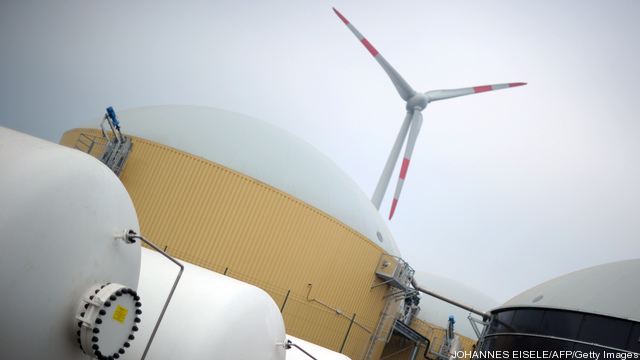
Allowing power from electricity storage to be counted toward meeting renewable portfolio standards would boost integration of advanced storage technologies into the electricity system, speakers told the Electricity Storage Association conference in Washington last week.
Terry Boston, CEO of PJM, the nation’s largest grid operator, said he’d like to see states let up to 25% of their RPS be met with storage when the storage systems are fed by clean sources like wind and solar.
Now, wind generation often occurs overnight, when it is least needed. The electricity has nowhere to go and is dumped. Storage in any of a variety of technologies – older ones like pumped storage hydro, or cutting-edge ones like flywheels and advanced batteries – could save that electricity for when it is needed.
With storage technologies now maturing rapidly and costs coming down, speakers said, federal and state regulators are just beginning to grapple with how storage ought to be categorized and paid for. Storage can augment generation or support transmission, but it doesn’t easily fit into long-standing tariff structures for either one.
For instance, said Arnold Quinn, Director, Division of Economic & Technical Analysis in the Federal Energy Regulatory Commission’s Office of Energy Policy & Innovation, regulators have placed restrictions on third-party sales of transmission services which now need to be reviewed.
One opportunity for those services is coming directly from the influx of wind and solar. Utilities in PJM’s mid-Atlantic and Midwest service territory need 42,000 MW of new renewables to meet current state RPS requirements, Boston said.
The Challenge Is The Opportunity
Wind and solar power outputs are often intermittent, challenging grid operators to maintain system balance.
Conventional power sources like natural gas turbines have been used for years for frequency regulation, but storage technologies like advanced batteries and flywheels can react far faster. With megawatt-level storage now entering commercial service, it’s feasible to use storage resources for grid-balancing.
FERC ruled last fall, in order 755, that these so-called frequency regulation services are different from routine power purchases, and grid operators should pay both energy and capacity charges for them. Regional grid operators are now figuring out new tariff plans.
But Boston said storage can also make more renewable power more available overall, though he said fully recognizing that role will require state-by-state changes in RPS definitions, which he admitted will be “tough.”
He cited new facilities now coming on line or in planning, such as AES Energy Storage’s Laurel Mountain battery farm in West Virginia. Set in the midst of a 98-megawatt wind farm, the 32 MW of A123 lithium-ion batteries store excess energy from the surrounding 61 turbines. The battery power is then dispatched as needed to smooth out ups and downs on the grid.
Storage is also challenging federal regulatory practices. In one instance in 2010, the Western Grid Development project in California, FERC ruled storage was an integral part of a transmission project and was eligible for special transmission incentives.
Separately, on several occasions, speakers said the Treasury Department has recognized storage as part of renewable generating projects for purposes of calculating the investment tax credit due a project. But that recognition has so far come only in private letter rulings, which apply only to single projects.
